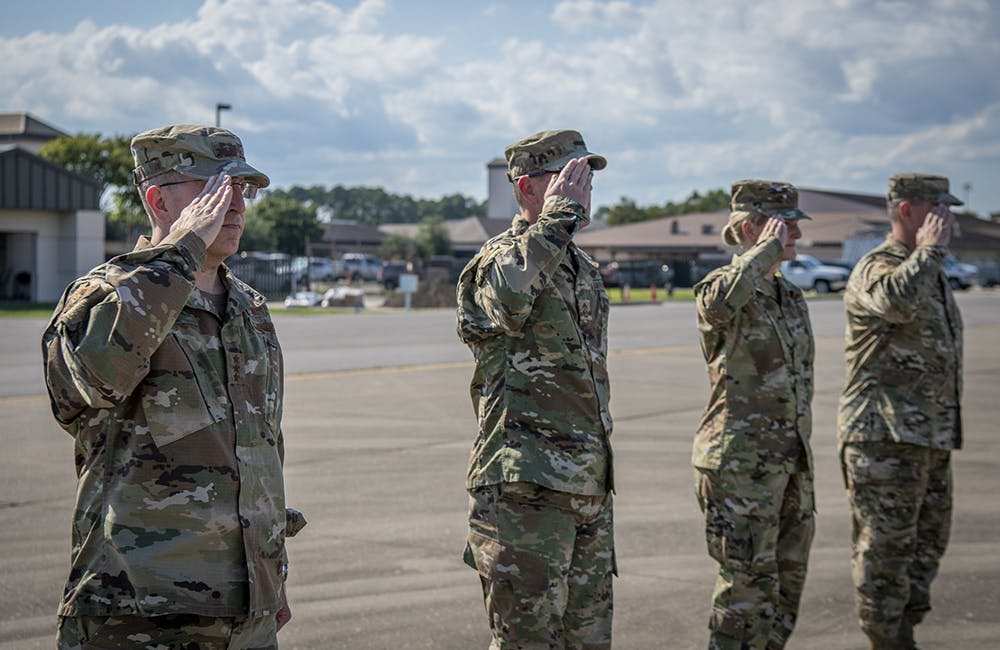SOCOM Looks to Army Futures Command for Network Modernization
As data collection expands at the tactical edge, the service wants commercial cloud capabilities and cloud-based collaboration tools to process data more efficiently.

Shifting to commercial cloud-hosted collaborative tools is helping the Special Operations Command (SOCOM) modernize the network and tactical edge, enabling key decision-makers to respond more quickly in theater.
Col. Joseph Pishock, COO of SOCOM Networks and Services, said during a FedInsider webinar last week that the commercial cloud helps SOCOM process and analyze intelligence, surveillance and reconnaissance (ISR) data more efficiently and effectively.
Pishock said the “old infrastructure” that supported conflicts in Afghanistan and Iraq no longer serves mission needs.
“The data that supports our intelligence platforms, the predator drones, etc., we’ve all got that frame of reference for conflicts in Afghanistan and Iraq,” he said during the webinar. “Over the last 15 to 20 years, an infrastructure emerged to support those assets like a Global Hawk. We found a way to do the storage and analysis and then the services fielded tactical systems, but they’re still big, large, clunky platforms, they were managed in theater.”
Pishock said this data was “heavy in video” and came from location-dependent sensors. But SOCOM wants to glean and process data more quickly and from more sensors in more locations. Instead of collecting data from aerial drones controlled from a base, which isn’t always useful or accurate, SOCOM wants to collect data from handheld drones controlled by warfighters only few feet away.
In other words, Pishock wants to move the network edge closer to the mission.
“Both Army Futures Command and Program [Special Operations Forces] Warrior are in the space of handheld drones that define the next generation of ISR because we don’t have a large national platform,” he said. “The events in Ukraine are extremely informative because we’re seeing in real time handheld drones with cameras … the use of ISR has moved much, much farther forward and it’s being done relatively close to the target. In terms of scale, the work of AFC is a guide to what we can expect for combat formations and we’re seeing previews of that play out right now. Data at the edge is expanding at a rapid scale.”
This strategy allows for higher accuracy to make faster, smarter decisions in theater, but also requires lightning-fast network speeds, which highlights the need for 5G.
“You really only see the most current information to allow you to see where that person or unit is,” Pishock said. “That’s where edge computing is helping. I don’t need to see where the helicopter was five minutes ago because of latency, I need to see where it is now. It’s led to the adoption of more edge devices.”
Pishock unofficially calls this the “tactical mission network … a term we’re using in SOCOM to describe a commercially cloud-hosted collaboration tool,” like an instant messenger app, and it allow partners to collaborate at the edge.
“Our ability to take a tactical mission network would be some kind of, think basic collaboration tools, spin them up in the commercial cloud and deliver them to an endpoint in your hand, most likely a cellphone,” he said.
But this vision comes with cybersecurity challenges, specifically the Defense Department’s tendency to over-classify data, which can block attempts to share key data and information quickly with other military service branches or allies. Even worse, sometimes after running through all the necessary compliance checklists and security and encryption protocols, data from the tactical edge is no longer usable or readable.
“We struggle through concepts like identity management and multiple accounts and instances that may fly in the face of a well-designed product that might not understand that there are four or five instances of Joe Pishock, well, welcome to the Department of Defense,” Pishock said. “They wind up adding different levels of complexity in DOD networks — that’s a level we contend with, and in most cases it’s not there because of the best reason it may be there because of a policy or a cybersecurity regulations. So the product has to be modified to operate in this environment, which places demands on how you run your services and, of course, the transport.”
Pishock believes SOCOM’s network modernization effort to serve the tactical edge requires collaboration and data sharing to be a success, which will also ultimately require help from commercial cloud capabilities.
“The edge computing environment is not going to be something that gets solved because of a great DOD top-down idea,” he said. “It will be harnessed because of a bottom-up effort. I think if you don’t have an end-to-end commercial cloud or data sanctuary some place, you can’t really enable what you need all the way out there on the edge.”
This is a carousel with manually rotating slides. Use Next and Previous buttons to navigate or jump to a slide with the slide dots
-

Inside DOD’s Push to Grow the Cyber Workforce Through Academia
Diba Hadi gives her first interview since becoming principal director of the DOD’s Cyber Academic Engagement Office.
15m listen -

Agencies Tackle Infrastructure Challenges to Drive AI Adoption
Federal agencies are rethinking data strategies and IT modernization to drive mission impact and operational efficiency as new presidential directives guide next steps.
5m read Partner Content -

Generative AI Demands Federal Workforce Readiness, Officials Say
NASA and DOI outline new generative AI use cases and stress that successful AI adoption depends on strong change management.
6m read -

The Next AI Wave Requires Stronger Cyber Defenses, Data Management
IT officials warn of new vulnerabilities posed by AI as agencies continue to leverage the tech to boost operational efficiency.
5m read -

Federal CIOs Push for ROI-Focused Modernization to Advance Mission Goals
CIOs focus on return on investment, data governance and application modernization to drive mission outcomes as agencies adopt new tech tools.
4m read -

Fed Efficiency Drive Includes Code-Sharing Law, Metahumans
By reusing existing code instead of rewriting it, agencies could dramatically cut costs under the soon-to-be-enacted SHARE IT Act.
5m read -

Agencies Push Data-Driven Acquisition Reforms to Boost Efficiency
New initiatives aim to increase visibility of agency spending, improve data quality and create avenues to deploy solutions across government.
5m read -

Data Transparency Essential to Government Reform, Rep. Sessions Says
Co-Chair of the Congressional DOGE Caucus Rep. Pete Sessions calls for data sharing and partnerships to reduce waste and improve efficiency.
5m read -

DOD Turns to Skills-Based Hiring to Build Next-Gen Cyber Workforce
Mark Gorak discusses DOD’s efforts to build a diverse cyber workforce, including skills-based hiring and partnerships with over 480 schools.
20m listen -

AI Foundations Driving Government Efficiency
Federal agencies are modernizing systems, managing risk and building trust to scale responsible AI and drive government efficiency.
40m watch -

Trump Executive Order Boosts HBCUs Role in Building Federal Tech Workforce
The executive order empowers HBCUs to develop tech talent pipelines and expand access to federal workforce opportunities.
3m read -

Navy Memo Maps Tech Priorities for the Future Fight
Acting CTO’s memo outlines critical investment areas, from AI and quantum to cyber and space, as part of an accelerated modernization push.
5m read
















